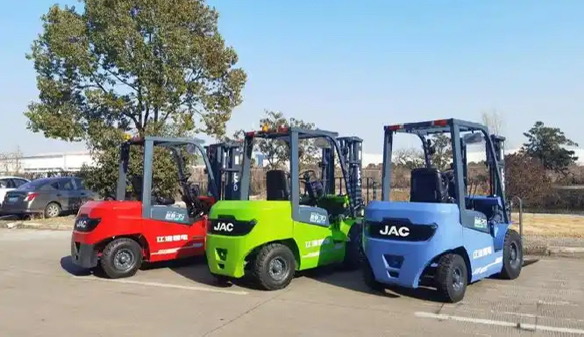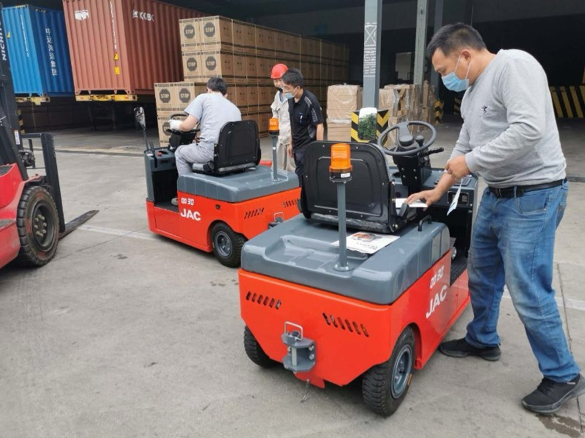أصبحت الرافعات الشوكية أداةً لا غنى عنها في الصناعة الحديثة، إذ أحدثت ثورةً في طريقة مناولة المواد ونقلها. وقد وجدت شركة أبحاث السوق العالمية المرموقة PMR (Persistence Market Research) أن هذه الآلات، من المستودعات إلى مواقع البناء، تلعب دورًا محوريًا في تعزيز الكفاءة التشغيلية وخفض تكاليف العمالة. يشهد سوق الرافعات الشوكية تطورًا مستمرًا، مدفوعًا بالتقدم التكنولوجي، والطلب المتزايد على لوجستيات التجارة الإلكترونية، والحاجة إلى حلول مستدامة وفعالة. سنتناول أدناه العوامل الرئيسية التي تُشكل صناعة الرافعات الشوكية.
وفقًا لتوقعات PMR، من المتوقع أن ينمو حجم سوق الرافعات الشوكية العالمي من 61.9 مليار دولار أمريكي في عام 2024 إلى 103.6 مليار دولار أمريكي في عام 2031، بمعدل نمو سنوي مركب قدره 7.6٪. ويعزى هذا النمو بشكل رئيسي إلى ثلاثة عوامل رئيسية: الزيادة الكبيرة في الطلب على التجارة الإلكترونية، ودعم السياسات الحكومية، وتسريع عملية التصنيع. وتتصدر منطقة آسيا والمحيط الهادئ العالم بحصة سوقية تبلغ 56.3٪، وذلك بفضل دعم الشركات المصنعة الكبرى مثل شركة Doosan Corporation وHangcha Forklift. ويركز السوق الأوروبي على بناء سلاسل توريد مستدامة. وتحافظ الرافعات الشوكية الموازنة على هيمنتها في السوق بحصة سوقية تبلغ 52.2٪ (في عام 2024)، بينما تظهر الرافعات الشوكية الكهربائية، بمزايا حماية البيئة وتوفير الطاقة والفعالية العالية من حيث التكلفة، بسرعة بمعدل نمو سنوي مركب قدره 8.2٪. مع تزايد ندرة مساحات المستودعات، ارتفع الطلب على الرافعات الشوكية المدمجة بشكل كبير، مما أدى إلى زيادة الطلب في السوق.

تزايد الطلب على الرافعات الشوكية في مختلف الصناعات
الرافعات الشوكية أجهزة متعددة الاستخدامات تُستخدم على نطاق واسع في مختلف الصناعات، بما في ذلك التصنيع وتجارة التجزئة والخدمات اللوجستية والبناء. وقد أدى نمو التجارة الإلكترونية إلى زيادة الطلب عليها بشكل كبير، حيث تحتاج المستودعات ومراكز التوزيع إلى حلول فعالة لمناولة المواد لمواكبة حجم الطلبات المتزايد. بالإضافة إلى ذلك، يعتمد قطاع البناء بشكل كبير على الرافعات الشوكية لنقل المواد الثقيلة، مما يزيد الإنتاجية في مواقع البناء.
الزراعة مجالٌ آخر تزداد فيه شعبية الرافعات الشوكية تدريجيًا. يستخدم المزارعون هذه الآلات للتعامل مع كميات كبيرة من المحاصيل والأعلاف وغيرها من الإمدادات. ويؤكد تزايد شعبية الرافعات الشوكية في مختلف الصناعات دورها المحوري في الاقتصاد الحديث.
ديناميكيات السوق: الاتجاهات الأساسية التي تدفع نمو صناعة الرافعات الشوكية
التحول إلى الكهربة: أدت اللوائح البيئية الصارمة والطلب المتزايد على حلول موفرة للطاقة إلى التحول نحو الرافعات الشوكية الكهربائية. تهيمن النماذج الكهربائية الآن على السوق، وخاصةً في التطبيقات الداخلية.
موجة الأتمتة: تتزايد شعبية الرافعات الشوكية الآلية في المستودعات والمصانع، مما يمكّن المؤسسات من تبسيط العمليات وتقليل تكاليف العمالة.
ازدهار التجارة الإلكترونية: أدى النمو السريع للتجارة الإلكترونية إلى تكثيف الطلب على معدات مناولة المواد. يتعين على الشركات السعي جاهدةً لإدارة معدلات دوران المخزون المرتفعة وضمان التسليم في الوقت المحدد.
ترقيات السلامة: يعطي المصنعون الأولوية لميزات السلامة مثل أنظمة منع الاصطدام والتصميمات المريحة والتحكم في الاستقرار لتقليل الحوادث في مكان العمل.
متطلبات التخصيص: تبحث الشركات عن حلول مخصصة للرافعات الشوكية لتلبية الاحتياجات التشغيلية المحددة، مما يؤدي إلى زيادة الطلب على النماذج متعددة الاستخدامات والقابلة للتخصيص.

رؤى إقليمية: الأسواق الرئيسية للرافعات الشوكية
يشهد سوق الرافعات الشوكية أنماط نمو متفاوتة باختلاف المناطق. وبفضل التصنيع السريع والتحضر وتوسع التجارة الإلكترونية في دول مثل الصين والهند، تستحوذ منطقة آسيا والمحيط الهادئ على الحصة السوقية الأكبر. كما تُعدّ أمريكا الشمالية وأوروبا أسواقًا مهمة، مع تركيز على الأتمتة والاستدامة. في الشرق الأوسط وأفريقيا، يُسهم تطوير البنية التحتية ونمو قطاع الخدمات اللوجستية في زيادة الطلب على الرافعات الشوكية. ورغم صغر حجم سوق أمريكا اللاتينية، إلا أنه يشهد نموًا مطردًا بفضل زيادة الاستثمار في مشاريع التخزين والمشاريع الصناعية.

